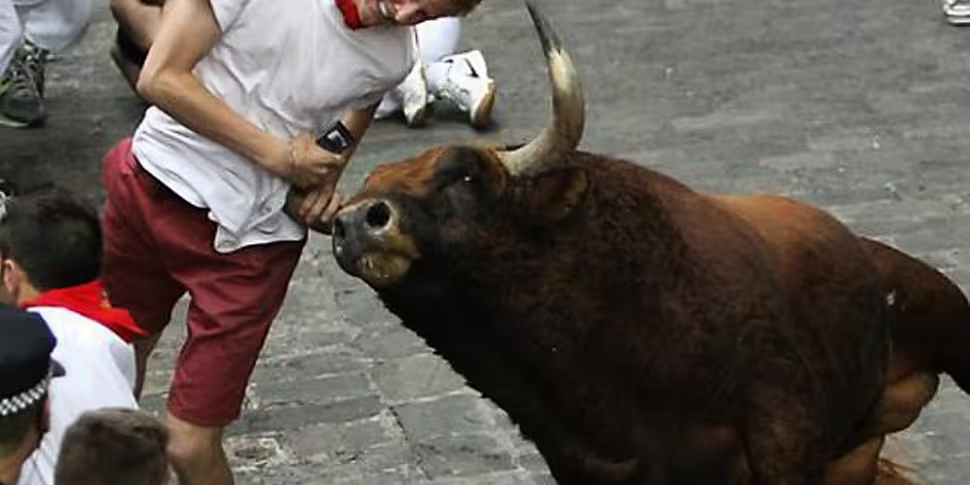I don't know if it's a good thing or a bad thing, but I never attended an actual bullfight while I was living in Seville, Spain from Autumn 2008 to summer 2009.
Mind you, it wasn't for want of trying. In September 2008, a few of us went down to Sevilla's iconic bullring (also known by its full name Plaza de toros de la Real Maestranza de Caballería de Sevilla), only to be told the "festivities were off" as it turned out to be one of the very few days of rain that the southern Spanish city would get.
Bullfighting season runs from March to October so by the time spring 2009 had come round, I had forgotten about heading down to the bullring.
But that July I was in the small city of Denia (located near Alicante in Valencia Province and a sort of purgatory before you reach the divine shores of Ibiza).
Denia was hosting its annual Bous a la Mar festival. I found myself packed into a high wooden stand in the sweltering heat which was not too disimilar to the recent heatwave.

A bull charging at participants in Denia, July 2009
Directly across from the stand was the Mediterranean sea and in between were a group of hardy souls cowering in the dust below.
I say hardy, because every two minutes a raging bull would be released from enclosures below the stand to charge at them. Sometimes the bulls would run headlong at people standing by the water's edge and end up in the sea along with their targets. Seeing as neither bulls nor humans seemed to suffer any injuries, it was a bit of an adrenalin rush.
However, at other times the bulls would try to run at people gathered in front of the metal bars below the stands and it wasn't particularly pleasant to feel a rickety wooden stand shaking from side to side with a live bull waiting below.

The stands are a bit higher off the ground than this image suggests
Thankfully, no one got hurt. But on Saturday in Pamplona, an Irish man was seriously injured during the iconic Running of the Bulls in the Navareese town. Robert Thackaberry from Dublin was one of 23 people injured during a pile-up, which saw him suffer crush injuries and knocked out cold by stampeding bulls. Today, an Australian woman was among those seriously injured in the final day of the festival.
Robert Thackaberry recovering from his injuries
Injuries are part and parcel of the bull run with up to 300 occuring per year. Most are not serious as they are the result of falls. But some cases involve people being gored by the bulls.
In terms of fatalities, 15 people have been killed since 1910. 13 of those were gored, one was hit by a horn and another suffocated in a pile-up which highlights how lucky Thackaberry was.

Unsurprisingly there have been calls to ban the bull run and bullfighting in general, both from a human safety standpoint and an animal rights perspective.
And some of those calls have been enacted into legislation. While bullfighting was never hugely popular in some parts of Northern and North-West Spain, it has been banned in other areas such as Catalonia and the Canary Islands.
But in other parts of the country, particularly in the south and the centre of the country, it remains hugely popular.

A bullfight in Seville
In a 2007 poll by Spanish daily El Mundo 58 per cent of respondents were opposed to a ban, while 33 per cent wanted an immediate ban which suggests that there is no real appetite to change the status quo in the sport's heartland.
That's mainly because it is more a question of respecting tradition rather than an issue of animal rights or human safety, especially as bulls are a marketing tool used by the Spanish tourist industry with an image of the animal often emblazoned on t-shirts.
Additionally the tourism revenue generated by bullfighting and bull runs which coincide with peak periods of activity makes it unlikely that a ban will spread to Spain's heartland anytime soon.
Green placemarks denote areas where bullfighting remains popular. Yellow suggests areas where it is almost non-existent, while red means bullfighting is banned in that particular autonomous community.
View Bullfighting popularity in Spain in a larger map










